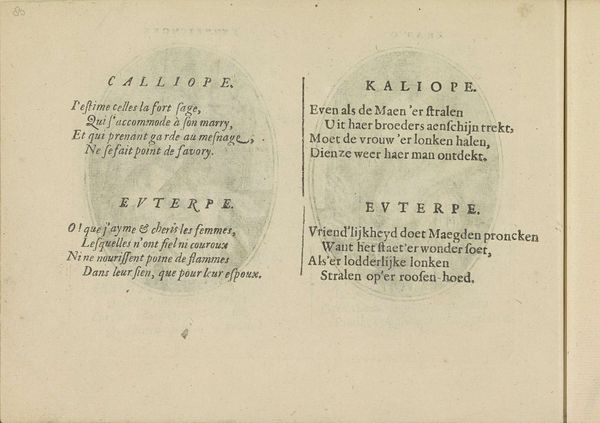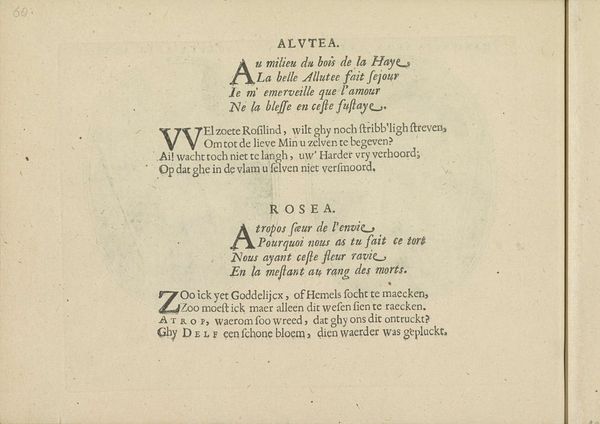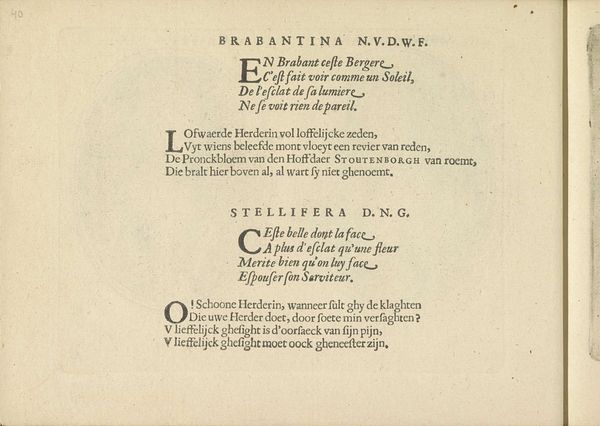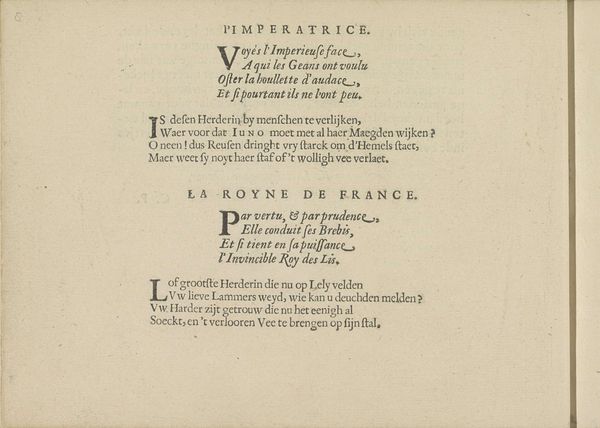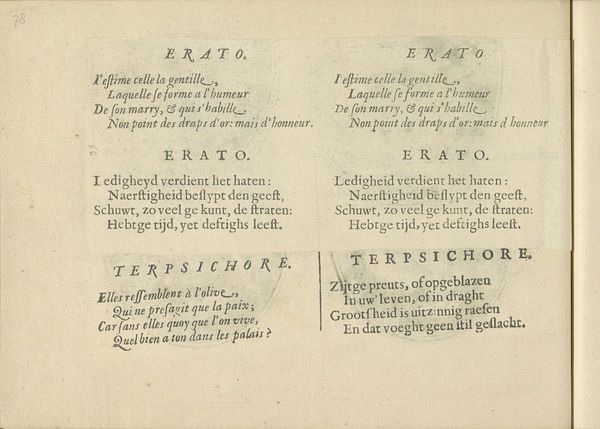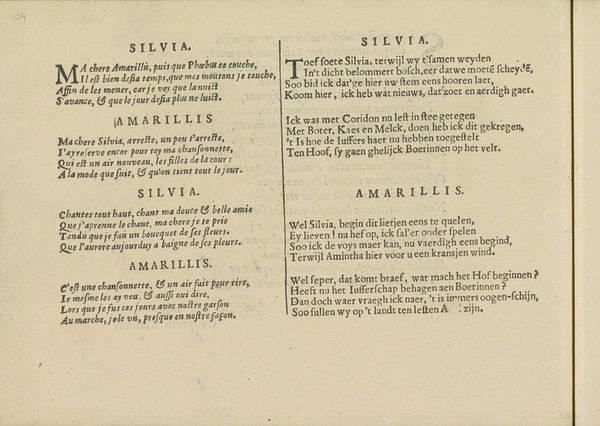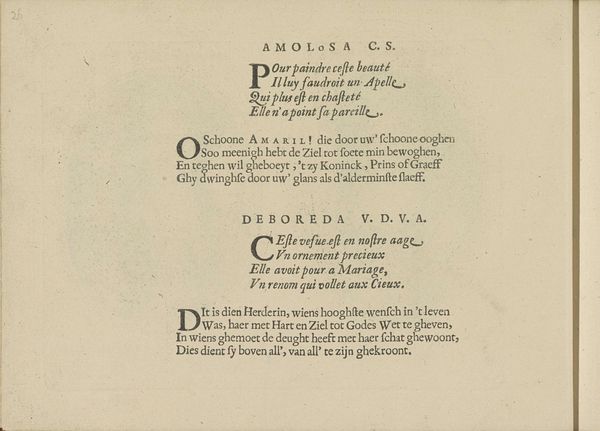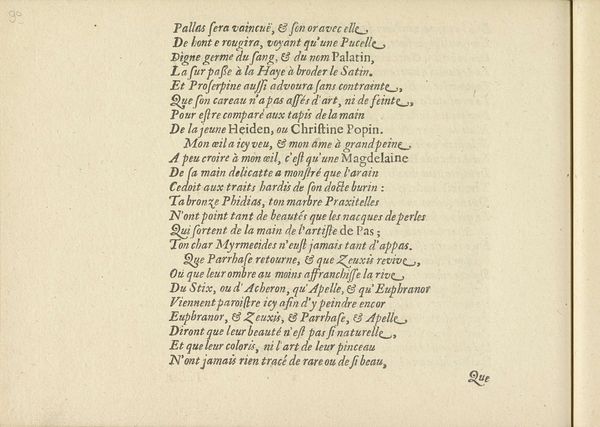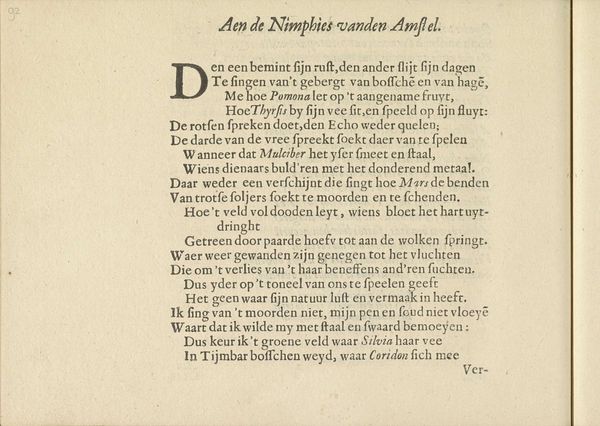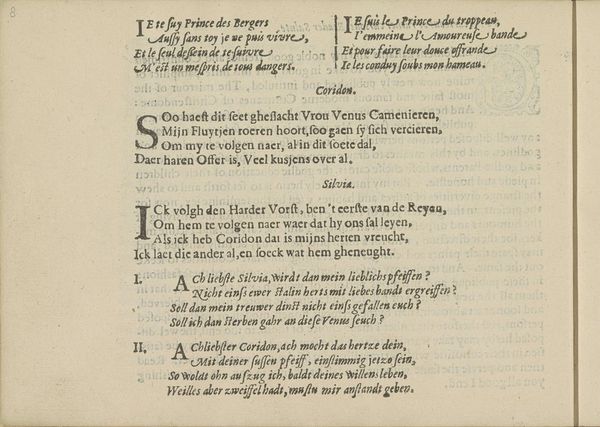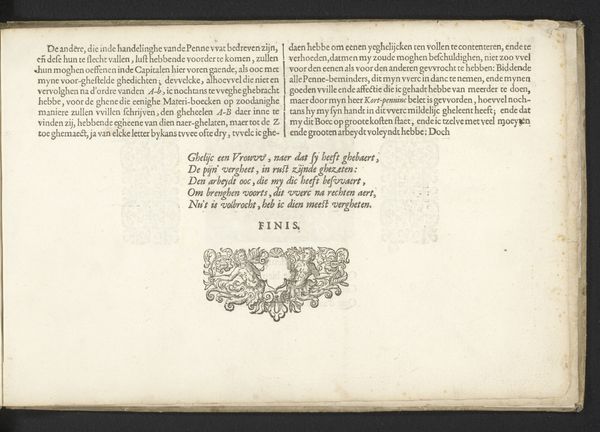
Kwatrijnen bij de voorstellingen van de muzen Urania en Polyhymnia 1640
0:00
0:00
crispijnvandeiipasse
Rijksmuseum
print, paper, typography, engraving
# print
#
paper
#
11_renaissance
#
typography
#
engraving
Dimensions: height 140 mm, width 190 mm
Copyright: Rijks Museum: Open Domain
Curator: Right, let's look closer at this piece titled "Kwatrijnen bij de voorstellingen van de muzen Urania en Polyhymnia," made around 1640 by Crispijn van de Passe the Younger. It's currently held here at the Rijksmuseum. He's used engraving and typography on paper to create it. Editor: My initial feeling? It’s strangely intimate. Seeing these blocks of dense text gives the piece a private, almost secret quality. It's like stumbling upon someone's personal notebook. Curator: Indeed. Each block of text represents a quatrain—a four-line stanza—dedicated to either Urania, the muse of astronomy, or Polyhymnia, the muse of sacred poetry. Van de Passe presents them almost like character sketches. What interests me is how they would be received publicly. These images are about poetry, which inherently suggests the intention is widespread enjoyment. Editor: I like how it contrasts both French and Dutch; it offers glimpses into their natures. One of my favorite parts is where Polymnia "D'un regard doux, & gracienx”, she who is kind and affable. In some sense, the text performs the very actions they invoke. I'd assume that the engraving process to do such intricate work of letters in different languages was time-consuming. Curator: Absolutely, especially given the detailed and ornate letterforms. Remember that in the 17th century, the printing press and typography were vital tools for disseminating ideas, political views and establishing a particular social identity and distinction by the command of multiple languages. Presenting these muses alongside verses in both languages also suggests the reach and accessibility the artist hoped to achieve. Editor: So in this image, what do you take away? Curator: For me, it's about the power of language. And Van de Passe, a clever commentator. He presents an ode to language while creating art about language. Editor: Yes, seeing these carefully arranged letters in what feels like such an intimate setting almost whispers that importance in one's ear, making this piece, this print, far more impactful than a mere piece of artwork. It makes it alive.
Comments
No comments
Be the first to comment and join the conversation on the ultimate creative platform.
